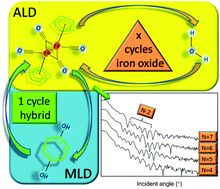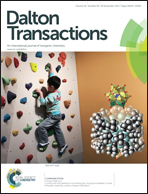Iron-based inorganic–organic hybrid and superlattice thin films by ALD/MLD
Abstract
Here we present novel layer-by-layer deposition processes for the fabrication of inorganic–organic hybrid thin films of the (–Fe–O–C6H4–O–)n type and also superlattices where thicker iron oxide layers alternate with monomolecular-thin organic layers. The processes are based on a combination of atomic layer deposition (ALD) and molecular layer deposition (MLD) techniques where the cyclopentadienyl iron dicarbonyl dimer (Cp2Fe2(CO)4) is used as the iron source and hydroquinone (HQ) as the organic precursor. For the (–Fe–O–C6H4–O–)n hybrid films a growth rate value as high as 3.7 Å per cycle was achieved at 180 °C. Superlattices where thin crystalline iron oxide layers of the magnetite structure alternate with single organic layers consisting of benzene rings were moreover successfully fabricated from the same precursors at 160 °C using water as the source of oxygen in the ALD cycles for the magnetite layers. We foresee that our new ALD/MLD processes offer a valuable novel tool to modify the properties of magnetite thin films and even more widely possess the potential to boost the ALD/MLD research frontier on functional transition metal oxide based thin films.


 Please wait while we load your content...
Please wait while we load your content...